
All categories
Featured selections
Trade Assurance
Buyer Central
Help Center
Get the app
Become a supplier

(22529 products available)






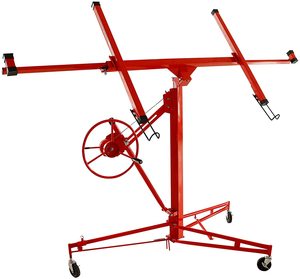
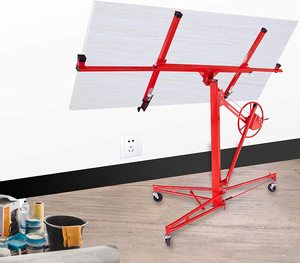

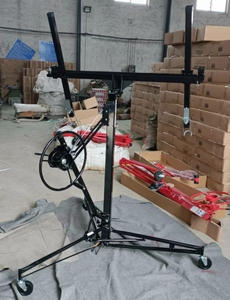
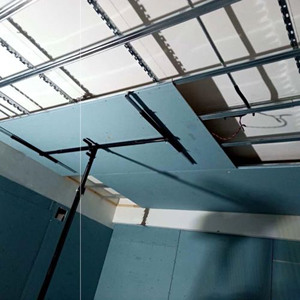
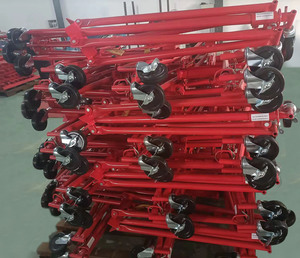


































Plasterboard lifts come in several types, depending on how they work and what they are used for. Below are the main categories of drywall lift available in bulk:
Manual panel lifters
These drywall cranes rely on human effort to operate. The lifters turn a hand crank or lever to extend the lifting arm and position the drywall. Manual lifts are inexpensive but need more strength and time to operate than powered versions.
Electric panel lifters
Drywall lifts operate using an electric motor. They are more expensive than manual lifts but require much less physical effort. These are useful for large construction projects that need a lot of drywall to be moved and installed.
Hydraulic panel lifters
Hydraulic panel lifters use hydraulic fluid to power a lifting mechanism. These are among the most powerful panel lifters and can be used in order. They are commonly used on construction sites because they are very good at lifting heavy objects like concrete blocks.
Mechanical panel lifters
Mechanical panel lifts use pulleys and levers to lift materials. The design is simple, practical, and works without power or hydraulics. Pulleys make it easier to lift heavy things, but they take longer than electric or hydraulic lifts.
Electric panel lifters
Electric panel lifters are great for large buildings because they use power. All builders have to do is push a button, and the lift fulfills their requirements. Electric lifts are commonly used in drywall installation.
Plasterboard lifts are useful tools that help install drywall and other large building materials. Depending on the type of job, which kind of lift works best varies.
Construction
Construction workers use hydraulic lifts to move concrete blocks and big beams. They also use them to lift cement sacks from the ground to higher floors.
Warehouse management
Workers in warehouses lift bulky items from low shelves to high ones. They can move products around and stack items neatly. Lifts save time and reduce injuries caused by lifting heavy things.
Manufacturing
Large parts and machinery are moved and positioned on factory floors. Mechanical lifts help with assembly and keep work areas organized. This makes production faster.
Logistics and transportation
Trucks, trains, and ships transport products – panel lifters load and unload them too! They help carry televisions off trucks and magazines off of trains, for example. Without them, deliveries would take longer and products could get damaged.
Maintenance and repair work
They assist maintenance workers in repairing ceilings, electrical wiring high up, and outdoor work like fixing billboards. They are very helpful whenever work is done above ground.
Here are some of the important things about plasterboard lifts and how to choose the right ones for customers:
Popular sizes
Panel lifts come in sizes from 8 to 16 feet long for ceilings and walls. Lifts with larger arms can handle more than 3-foot wide drywall sheets. Builders installing big buildings often choose lifts with the largest sizes.
Weighty drywall
Most lifts can carry panels that weigh up to 10.5 kilograms each. Those designed for very large jobs can lift 13.5 kilograms drywall without any help.
Adjustable arms
The lifters have arms that can be moved to different positions on the panel. This makes it easier to lift materials that are all shaped differently.
Crank and lock
There is a hand crank that can be used to adjust the arm's height; it also locks the arm in place so it does not drop unexpectedly while being used.
Light but strong
The lifters are built with lightweight metal frames that are still very tough. Aluminum alloys work well to keep the lifts as easy to carry around workplaces as possible. However, they won't bend or break from heavy use either. Builders prefer them over steel lifts that weigh too much.
The first consideration is what the contractor will be doing. Working on ceilings may need a lift that can reach more than 3.6 metres. Working on walls doesn't require such a lift. Electric lifts are suitable for larger projects.
Next, how heavy the panel being used is should be considered. Electric lifts are needed when carrying large cement boards. Drywall lifts that use hydraulic power can lift much more weight than electric ones.
Lifts that use electricity have proven to be effective for large projects. Builders can afford manual ones for small jobs. Pulleys take a lot of work and time, but mechanised lifts operate faster. Hydraulic ones use the least amount of manpower.
Lastly, how much money should be spent on the lorry loader should be considered. Manual ones are cheaper. They do not have the unlimited lifting power that mechanics and hydraulics have. The latter two are significantly more expensive but worth it for large jobs.
A1. Yes, panel lifters work well outside. They are tough enough to move metal and glass roofing, which are both very difficult to lift. They are protected from rain and wind. However, it is smart to cover them so dirt and debris do not get inside the machinery.
A2. Manual panel lifters are not as effective as powered ones, but they have some advantages. They are cheaper, easier to fix, and lighter to carry. They are good for small jobs where a power lift is not needed.
A3. The type of project is important. Motor lifts are good for big jobs. Mechanical and manual lifts are helpful for smaller projects. The weight of the panel and the tools required should also be considered.
A4. Workers must inspect the lifter before using it. Moving parts should be oiled. It should be protected from bad weather. The lifters should be stored in a dry garage.
A5. Well-kept panel lifters last for about 5 years. The finish can wear out from severe usage. However, the mechanics and machine parts can last for many more years.